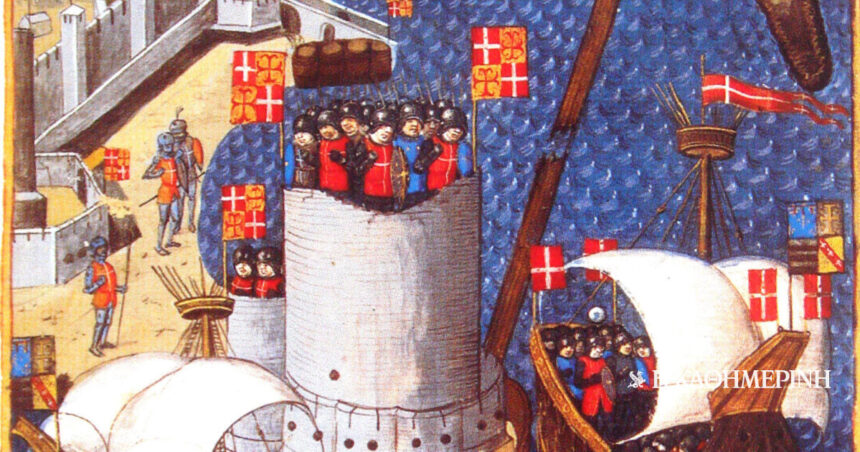The Knights of St John, a Roman Catholic monastic order, had taken over the Rose at the beginning of the 14th century (1306-1310) after the loss of Acre (1291), the last stronghold of the Crusaders in Palestine. Having taken possession of Rhodes, they engaged in trade in Aegean Seawhile at the same time they sought to secure control in the Eastern Mediterranean, which brought them face to face with the Ottomans. In addition, the presence of the knights a short distance from the southern coast of Anatolia constituted major obstacle to Ottoman expansion. The facts and balances reached a breaking point in 1481, when the island was hit by a strong earthquake and besieged by the Ottomans, however, they were not radically modified.
After the siege and the earthquake, the walls of the island were strengthened according to the new fortification techniques, called “trace italienne”. Philippe Villiers de L’Isle-Adam, Grand Master from 1521, expected a new Ottoman attack on the island and therefore continued to strengthen the fortifications. At the same time he appealed to the knights of the Order elsewhere in Europe to hasten to the defense of Rhodes, an appeal which was ignored by all but the John Rawson from Ireland, who hastened to the island.
The Turkish force that arrived at Rhodes on June 26, 1522 numbered 400 ships under the command of Mustafa Pasha.
The Grand Master’s prediction proved correct. The Turkish force that arrived at Rhodes on June 26, 1522 numbered 400 ships under the command of Mustafa Pasha, Suleiman’s brother-in-law. The latter arrived about a month later, on July 28, with a force of 100,000 men. Initially, Ottoman forces blockaded the port and bombarded the citywhile at the same time they sought to undermine the fortifications by digging tunnels. Despite their strenuous efforts, however, the knights held on.
On September 24, Mustafa Pasha ordered a mass attack, but without the desired result. After a day of fierce fighting, Suleiman was forced to call off the attack. Yes, sentenced Mustafa Pasha to death for this failure. But then he spared his life at the entreaties of senior officials and replaced him with Ahmet Pasha, experienced in matters of siege.
Both sides were exhausted, with the knights’ position becoming increasingly difficult.
A new major attack was made at the end of November, which was again repulsed. By now both sides were exhausted, with the knights’ position becoming increasingly difficult. Pressed by the townspeople, Villiers de L’Isle-Adam agreed to negotiate with Suleiman. A truce was declared for the period 11-13 December so that the negotiations could take placewhich, however, did not proceed as the Ottomans wished. Suleiman immediately ordered the bombardment and attacks to resume, and the situation for the knights deteriorated rapidly from the 17th onwards.
With most of the walls now destroyed, it was only a matter of time before they were forced to surrender the city. This happened on December 20, when, after new pressure from the townspeople, the Grand Master asked for a new truce. With this move, Rhodes was now in the hands of the Ottomans. The terms – quite generous – which were announced two days later, were immediately accepted by the Latin and Greek residents.
The conquest of Rhodes by Suleiman was an important step for the control of the eastern Mediterranean by the Ottomans. In fact, in 1669 Rhodes would be the base from which the occupation of Venetian Crete was achieved.
Column editor: Myrto Katsigera, Vassilis Minakakis, Antigoni-Despina Poimenidou, Athanasios Syroplakis




